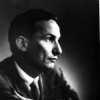Rudolf Arnheim

Rudolf Arnheim
Rudolf Arnheimwas a German-born author, art and film theorist, and perceptual psychologist. He learned Gestalt psychology from studying under Max Wertheimer and Wolfgang Köhler at the University of Berlin and applied it to art. His magnum opus was his book Art and Visual Perception: A Psychology of the Creative Eye. Other major books by Arnheim have included Visual Thinking, and The Power of the Center: A Study of Composition in the Visual Arts. Art and Visual Perception was revised, enlarged...
NationalityGerman
ProfessionArtist
Date of Birth15 July 1904
CountryGermany
When the thing observed... is seen as an agglomeration of pieces, the details lose their meaning and the whole becomes unrecognizable. This is often true of snapshots in which no pattern of salient shapes organizes the mass of vague and complex nuances.
From building a fire one can learn something about artistic composition. If you use only small kindling and large logs, the fire will quickly eat up the small pieces but will not become strong enough to attack the large ones. You must supply a scale of sizes from the smallest to the largest. The human eye also will not make its way into a painting or building unless a continuum of shapes leads from the small to the large, from the large to the small.
Just as a chemist "isolates" a substance from contaminations that distort his view of its nature and effects, so the work of art purifies significant appearance. It presents abstract themes in their generality, but not reduced to diagrams.
What, then, is the basic difference between today's computer and an intelligent being? It is that the computer can be made to seebut not to perceive. What matters here is not that the computer is without consciousness but that thus far it is incapable of the spontaneous grasp of pattern--a capacity essential to perception and intelligence.
A revolution must aim at the destruction of the given order and will succeed only by asserting an order of its own.
Climbing is a heroic liberating act; and height spontaneously symbolizes things of high value, be it in the value of worldly power or of spirituality. To rise in an elevator, balloon, or airplane is to experience being liberated from weight, sublimated, invested with superhuman abilities. In addition, to rise from the earth is to approach the realm of light and overview. Therefore the negative overcoming of weight is at the same time the positive achievement of enlightenment and an unobstructed outlook.
The foreign accent was a promise, and indeed, all over the country, European imports added spice to the sciences, the arts, and other areas. What one had to give was not considered inferior to what one received.
Art is continually working to take the crust of familiarity off everyday objects.
Order is a necessary condition for anything the human mind is to understand.
The line that describes the beautiful is elliptical. It has simplicity and constant change. It cannot be described by a compass, and it changes direction at every one of its points.
In a land of immigrants, one was not an alien but simply the latest arrival.
Both art and science are bent on the understanding of the forces that shape existence, and both call for a dedication to what is. Neither of them can tolerate capricious subjectivity because both are subject to their criteria of truth. Both require precision, order, and discipline because no comprehensible statement can be made without these. Both accept the sensory world as what the Middle Ages called signatura regrum, the signature of things, but in quite different ways.
The rehabilitation of order as a universal principle, however, suggested at the same time that orderliness by itself is not sufficient to account for the nature of organized systems in general or for those created by man in particular.
Seeing consists of the grasping of structural features rather than the indiscriminate recording of detail.